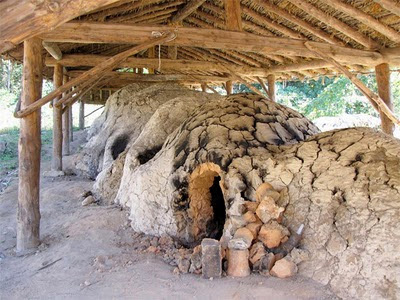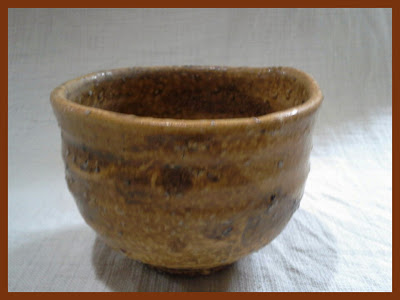If you have seen any celadon at all, in quick passing you might simply ignore this cup and place it with a million other celadon cups with crane and cloud carved inlay or rather sanggam technique. But this cup is far different even if you may not be able to see all of its qualities in the flat world of digital screen imagery.
The cup was
made by the wonderful female ceramic artist Kim Yu Sung. Kim Yu Sung is one of the only female celadon artists to
have won the prestigious Gangjin Celadon Award at Gangjin Korea’s annual
celadon competition held each year during the Gangjin Celadon Festival. Receiving this award placed her among
the nation’s best celadon artists.
She was selected by the city of Gangjin to be their representative demonstration carver for the New York opening of the International Gangjin Celadon Exhibition and her work truly stands out.
Fortunately for us one of her specialties is tea ware.

This crane carving is just 3.5cm. The dark legs are like tiny hairs even here. Imagine what it is like in actual scale.
Instead of looking at what this cup is, let's think about what this cup is not. It is not too green. It is not too gray. It is not too blue. It is not too light. It is not too dark. It is not too yellow. It is not too intense. It is not too large. It is not too small. It is not too thick. It is not too thin. It has no crazing. "Wait a minute." you might ask, "What do you mean, it has no crazing? I thought crazing was a good thing with celadon. I thought that celadon should have that, "cracked ice" look with lots of crazing." Well, to be blunt, crazing is a glaze fault. True we ceramic artists often like glaze faults. But do we really like them or do we adjust to them? Let's consider the celadon artists who because of the quality of their clay, the mixture of their glaze and the firing of their kiln simply can't produce celadon without crazing. Answer: Teach the world that crazing is good when it comes to celadon, create a memorable poetic term, - "cracked ice". Sounds pretty good. Say this so long and so often that you believe it yourself or because your teacher said so and we have "cracked ice" celadon. But the fact remains that the very best celadon has no "cracked ice" crazing. The fact remains that crazing is a glaze flaw.
This no "cracked ice" celadon is from Gangjin. Or should I say this pure smooth almost soft perfect secret color celadon is from Gangjin. Gangjin was the major center for the old celadon that was famous during the Goryeo Dynasty (918CE-1392CE) when celadon was in its glory. Gangjin was so famous then that today if you visit an art museum, anywhere in the world, that is fortunate to have an old 12th century celadon piece, there is a good chance it was made in Gangjin. Eighty percent (80%) of the celadon found in the museums of the world today were made in Gangjin- and traditionally without crazing. That is Gangjin celadon has no crazing.
Kim Yu Sung lives and works in Gangjin. She is co-founder and ceramic artist at the new Gangjin Goryo Celadon Institute along with Kang Kwang Mugg. They have established a beautiful center and have some great things happening there that I'll tell you about later. If you can't wait to learn about them, email me. Adventurous ceramic artists in particular should consider doing that.
We are all familiar with the aesthetics of the natural - like earth and stone. This is the aesthetics of nature like clouds and and a gentle breeze. This is the aesthetics of nature that is pure and humble and soft and even delicate. A whisper of color - not a shout. Such is this simple celadon cup by Kim Yu Sung - true poetry. Poetry that isn't forced but just 'is' - beautiful.
Why did I decide to write this post? I paired this cup with a tea. Not any tea, an unusual Darjeeling called Treasure Gold and a new offering at Morning Crane Tea.
There was something about that golden tea that made me think about this cup and something about this cup that made me think about this golden tea.
I particularly like celadon (but, as expressed above, not any celadon). I particularly like these perfect celadon cups and tea ware - those with this perfect color for these darker teas - the perfect cup for a delicious tea.
We will soon have Kim Yu Sung's beautiful tea ware available here at Morning Crane
Tea. Contact us if you would like to learn more about Kim Yu Sung and the other new tea ware artists we are making available this year. Click here to learn more about the tea Treasure Gold. Watch this site for a special offering joining Kim Yu Sung's tea ware with this or one of our other great oxidized and/or fermented teas - our balhyochas. We will have some exciting tea ware artists this year. Get ready.
I know you are asking, "What is the size of this cup?" The cup is 2.75 in W X 1.75 in H or 7 cm W X 4.5 cm H - perfect for Tea.




























